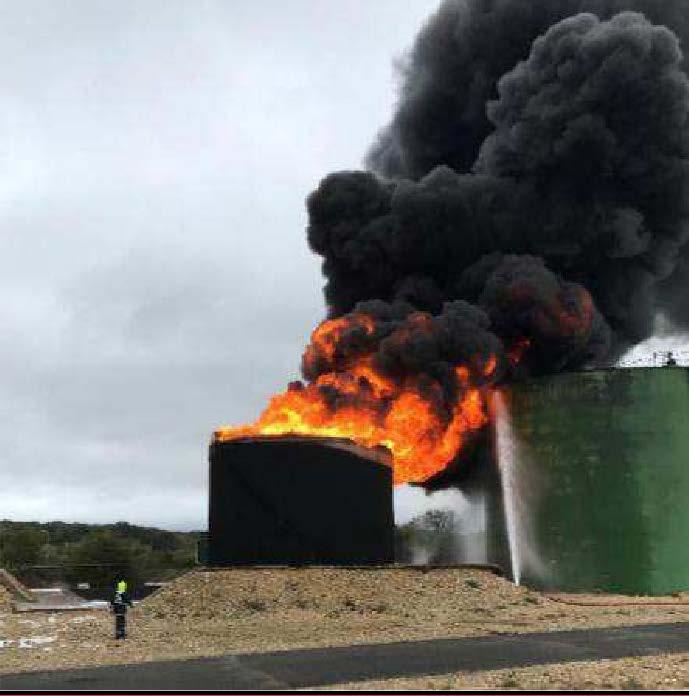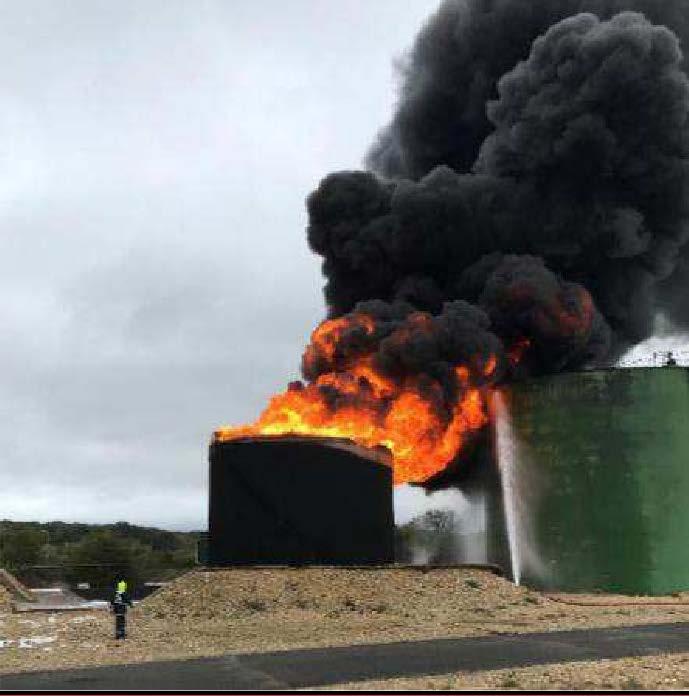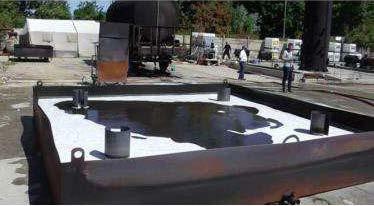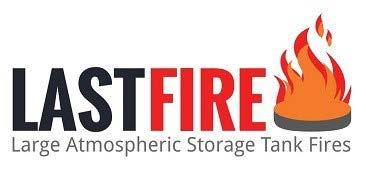
7 minute read
LASTFire: Phase 1 - tank testing
LASTFire: Phase 1 - tank testing
By Dr Niall Ramsden
The LASTFire Project, a group of international storage tank operators working together to develop best practice guidance in storage tank Fire Hazard Management is committed to minimising environmental consequences of their activities.
As part of ongoing efforts to evaluate the effectiveness of Fluorine free firefighting foams, the LASTFire group has carried out a comprehensive series of small and large scale tests, starting in 2016. It is important to review all results, from all phases of this work, holistically to get a full understanding of the results and achievements.
The test programme is undoubtedly the most comprehensive large scale, end user driven and managed practical work related to storage tanks undertaken for more than 30 years.
In addition, LASTFire is working with other industry groups to form a true understanding of the environmental effects of the new generation foams.
As the first of a series of articles, this article describes the procedures and results of the first phase of the test programme, which began in 2017 and involved more than 100 fires up to tank fires with 11m diameter.
It is important to recognise that whilst fire performance is obviously a major factor in selecting and using firefighting foam, other issues including physical properties, guaranteed shelf life, compatibility with other firefighting agents and suitability for use with materials of construction of systems must also be taken into account.
Overall the intention of this phase was also to address the following areas:
• Developing a snapshot of current capability of a representative selection of the new generation foams, particularly to assess if they can be considered absolute ‘drop in’ replacements with equivalent performance capability and without the need for system or application equipment modifications.
• Forming an overall view on whether or not modifications to current practices of foam application are required with new foam formulations to achieve acceptable performance or if more efficient usage of resources can be gained with different application techniques.
• Revalidation of the LASTFire test protocol
• Validating the accepted strategy for large bund fires using a ‘section by section’ approach.
• Investigation into application rate versus extinguishing time.
The first series of tests was carried out in Hungary at the facilities of FER, a LASTFire member that operates the emergency response capability at the MOL Szazhalombatta Refinery. These tests consisted of standard LASTFire tests and small (~4.5m) and large (~18m) simulated bund spill fires. Application rates consistent with LASTFire testing were generally used so typically represented approximately 50 to 60 percent of typical NFPA 11 design application rates. The lower test rate being used to provide a ‘safety factor’ in real situations.
Different devices using small scale nonaspirating, aspirating, medium expansion and CAF application were used. The three main LASTFire nozzles were designed to provide similar foam quality as would be achieved with typical proprietary equipment but on the small scale so as to represent real situations as closely as possible.


The second series of tests was carried out at the facilities of GESIP, Vernon, France. These tests involved application of foam using standard rates as per NFPA 11 guidance with proprietary equipment including aspirated and non-aspirated monitors, a fixed system pourer and a compressor driven CAF unit onto a 100m (~11m diameter) 10m high tank fire. Sufficient fuel depth was used to ensure that foam applied forcefully from ground level equipment did not penetrate though to the water substrate.
Small bund testing
The small bund test pan was of metal construction with dimensions 2,15m x 2,15m. This size of bund allowed the current LASTFire nozzles to be used for foam application at the same application rate as the LASTFire test itself. This also allowed for comparison between the LASTFire tests and the small bund tests. The depth of the test pan was designed such that a freeboard of approximately 200mm of hot metal remained above the fuel level. The fuel layer depth was defined to ensure that foam application did not penetrate through it. Obstacles were installed in the test pan to evaluate the capability of foam to travel round objects of different configurations that would generally be found in real large-scale bunds such as pipes and their supports etc. Two obstacles were used in the small bund tests, one with the opening facing towards foam application and the other obstacle with the opening facing away.

Large bund testing
The large bund test pan was of metal construction with dimensions 4.3 m x 4.3 m (four times the area of the small bund test pan). The obstacles used in the small bund testing were also used in the large bund testing. However, for the large bund test, four obstacles were used, all with opening facing in different directions, see Figure 4.4 below.
It is recognised that most bund walls are not of metal construction, so these tests probably represented worst case situations but nevertheless there will always be pipework and other metal structures within the bund that the foam will have to seal against

Tank testing
The test tank used had a surface area of 100 m2 and was approximately 10m in height. Only one application rate for each nozzle was used during these tests as follows:
• Application rate of 1 000lpm (10lpm/m) for aspirated and non-aspirated nozzle (referencing NFPA 11 rates, including a factor to allow for drop out from monitor application)
• Application rate of 400lpm (4lpm/m) for system nozzle (referencing NFPA 11 rates)
• Application rate of 325lpm (3,25lpm/m) for CAF
Some of the key conclusions from this work are highlighted below:
• The LASTFire test still continues to be relevant to all foam types for assessing the performance of foams using different application devices. However, the scoring system will be reviewed to give even greater emphasis on extinguishment and additional nozzle types will be developed.
• Although there is a tendency to be generic in comments regarding foam types, realistically this is a too simplistic approach because there are good and bad example for every foam type. What is critical is to assess actual performance related to specific applications, whatever the generic type of foam.
• None of the new generation foams should be considered as a straightforward drop i” replacement for any current foam concentrate being used. Even if appropriate fire performance can be shown for the specific hazard it is still necessary to check that the concentrate is compatible with the proportioning systems and other system components.
• The tank fire tests showed that new generation foams can be used at NFPA 11 application rates for these limited sized tanks but additional work is required to validate for larger incidents, including work on optimising foam properties and application techniques.
• An optimum combination of the application system and the foam is key to efficient foam application as some foams clearly work better with certain nozzle types. It is not necessarily the case that a foam that works better with one nozzle will work better than another foam with a different nozzle. It was also apparent, from visual observation of the foam stream that given the same atmospheric conditions and equipment, the dropout rate for monitor application also varied with foam concentrate. This was considered to be due partly to different expansion and stability achieved with the different foams through the same equipment but highlights the need to optimise equipment and foam concentrate combination.
• Standards should take into account the combined effect of foam concentrate, finished foam properties, application rate and application.
LASTFire continue to carry out further research in various events, which run annually; in February 2024 we are running a Firefighting Foam Workshop which will be held in Centro Jovellanos, Spain. This workshop is directed and wholly presented by independent specialists with extensive international knowledge and experience without any bias towards certain policies or products.
In April 2024, LASTFire are also hosting a Foam Summit in Vernon, France. This event will bring together specialists from all aspects of the transition process and is relevant to those with overall responsibility for the process.
For more information or to book please contact info@lastfire.org or visit Lastfire - News











